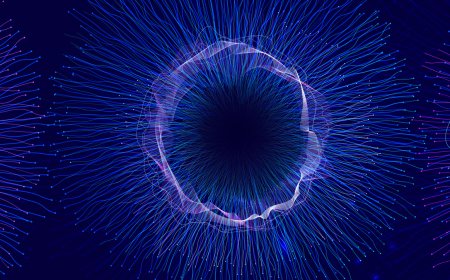Unveiling Distant Worlds: How Astronomers Detect Exoplanets Beyond Our Solar System
This article demystifies the science and technology behind modern exoplanet hunting. By explaining methods like radial-velocity spectroscopy, transit photometry, gravitational microlensing and direct imaging, it shows how astronomers infer the existence of worlds orbiting other stars. The explainer highlights the advantages and limitations of each technique and previews future missions poised to reveal Earth-like planets.

Introduction
The first confirmed discovery of an exoplanet orbiting a Sun‑like star, 51 Pegasi b in 1995, revolutionised astronomy. Today astronomers know of more than five thousand alien worlds and the number continues to grow thanks to increasingly sophisticated detection techniques. But exoplanets are extraordinarily dim compared to the stars they orbit, and most lie tens or hundreds of light‑years away. How do scientists infer the presence of a world that cannot be seen directly? This explainer walks through the main methods used to find and characterise exoplanets, describing the physics behind each and the kinds of planets each is best at revealing.
Radial‑velocity (Doppler) spectroscopy
One of the earliest and still widely used techniques is **radial‑velocity spectroscopy**, sometimes called the **Doppler** or **wobble** method. A planet’s gravity causes its host star to move in a small orbit around the system’s centre of mass. This motion produces tiny variations in the star’s **radial velocity**—its speed toward or away from Earth. Astronomers measure these variations by detecting shifts in the star’s spectral lines due to the **Doppler effect**. Sophisticated spectrometers such as HARPS on the ESO 3.6 m telescope and HIRES on the Keck telescopes can detect velocity changes of a few metres per second, enough to pick up Jupiter‑mass planets and even some super‑Earths around small stars. Radial‑velocity measurements were the workhorse of exoplanet discovery before transit surveys like **Kepler** and remain vital for confirming planetary candidates.
This technique has strengths and limitations. Because the radial‑velocity signal is independent of distance, massive planets can be detected around stars up to several thousand light‑years away, although practical observations tend to focus on stars within about 160 light‑years. The method measures a planet’s **minimum mass** but does not yield its radius. Highly inclined orbits produce smaller stellar wobbles and thus harder detections, and stellar activity can generate false signals. However, combining radial‑velocity data with other techniques can break degeneracies and reveal a planet’s true mass and density.
Transit photometry
The **transit method** searches for tiny dips in a star’s brightness when a planet crosses (transits) in front of it. When a planet transits, the star’s observed flux drops by an amount proportional to the ratio of the planet’s area to the star’s area. For a Jupiter‑size planet around a Sun‑like star the dimming may be a percent or two, while an Earth‑size planet causes a dip of only about **80 parts per million** (0.008 %). Space missions like **Kepler** and **Transiting Exoplanet Survey Satellite (TESS)** monitor thousands of stars simultaneously with high precision, enabling the discovery of thousands of transiting planets.
Transits provide the planet’s **orbital period**, relative size and, when combined with radial‑velocity data, its density. Multiple transits also allow measurement of transit timing variations, which can reveal additional planets. However, not all planets transit their stars from our viewpoint; geometric alignment favours detection of close‑in systems. False positives from stellar eclipsing binaries or star spots must be ruled out, usually with follow‑up radial‑velocity measurements.
Gravitational microlensing
When two stars happen to align closely along our line of sight, the gravitational field of the foreground star acts like a lens and magnifies the light of the background star. Such **gravitational microlensing** events are brief, lasting days to weeks. If the foreground star hosts a planet, the planet’s gravity produces an additional temporary brightening. Detecting microlensing events requires continuous monitoring of millions of stars toward the galactic bulge. The method is most sensitive to planets located one to ten astronomical units from Sun‑like stars and can find planets several kiloparsecs away, including low‑mass worlds.
Microlensing has detected a handful of exoplanets—including the first Earth‑mass planets around main‑sequence stars—but it has disadvantages. Each alignment is unique and unrecoverable, so follow‑up observations are impossible. Microlensing typically provides only the planet’s mass and semi‑major axis, with little information about its atmosphere or composition. Future space missions like **NASA’s Nancy Grace Roman Space Telescope** will conduct dedicated microlensing surveys, boosting the sample of cold, distant planets.
Direct imaging
In rare cases, astronomers can **directly image** exoplanets. Because planets are extremely faint compared with their host stars, direct imaging focuses on young, massive planets orbiting far from their stars. Light from these planets is primarily thermal emission in the infrared. Coronagraphs block starlight to reveal the planet’s faint glow. Direct imaging works best for nearby systems where the planet is several times the size of Jupiter, widely separated and still hot. Observations use advanced adaptive optics and instruments like the Gemini Planet Imager and VLT‑SPHERE.
Direct imaging can constrain a planet’s temperature and, in some cases, chemical composition. However, it generally provides only loose mass estimates, since the brightness depends on the planet’s age and thermal evolution. The method favours planets on face‑on orbits and is less sensitive to Earth‑like worlds around Sun‑like stars. Future space observatories, such as NASA’s planned **Habitable Worlds Observatory**, will use coronagraphs and starshades to directly image Earth‑sized planets and search their atmospheres for biosignatures.
Other methods and future prospects
Several additional techniques complement the main methods described above. **Astrometry** measures tiny motions in a star’s position on the sky as it is tugged by an orbiting planet; the European Space Agency’s **Gaia** mission will soon provide astrometric detections. **Pulsar timing** can detect planets around rapidly rotating neutron stars through changes in pulse arrival times. **Transit timing variations** detect planets via perturbations in the timing of transits of known planets. **Polarimetry** and **relativistic beaming** are emerging techniques for specialised cases. Each method probes different types of planetary systems, revealing the diversity of exoplanets in our galaxy.
Exoplanet science is advancing rapidly. Ground‑based surveys, improved radial‑velocity spectrographs and wide‑field space missions like **TESS** continue to add to the exoplanet census. Future missions—including NASA’s **Roman Space Telescope**, the **ESA’s PLATO** mission and proposed starshade‑assisted telescopes—aim to detect Earth‑like planets in habitable zones and study their atmospheres. As technology advances, the dream of finding a world similar to our own grows ever closer.
Conclusion
Detecting exoplanets is a triumph of human ingenuity. By carefully analysing starlight, monitoring minute brightness dips, exploiting gravitational lensing and devising instruments that block starlight to see the faint glow of a distant world, astronomers have discovered a menagerie of planets orbiting distant suns. Each method—radial velocity, transit photometry, microlensing and direct imaging—has distinct strengths and limitations, and together they provide a fuller picture of planets beyond our solar system. As future missions push detection capabilities to smaller and more Earth‑like worlds, the search for life among the stars is poised to enter an exciting new era.
What's Your Reaction?













































































































